How and when to spray strawberries from weevils in spring
Weevil damages plants on the strawberry plantation before flowering. It is necessary to process strawberries from weevils in the first days of spring. Alternative methods to insecticides are as effective as the use of chemicals.
How to find out if there is a pest on the site?
The long-proboscis weevil is widespread, affects raspberries, strawberries, blackberries, and damages the crop. The loss of strawberries can be 40%.
The insect is small, only 3 mm long, black and gray in color. He has a special sign - a long proboscis, the so-called rostrum. Beetles spend winter in strawberry areas under bushes and leaves, clods of soil. They crawl out onto plants when the air warms up to + 8-10 aboutC. With the appearance of young shoots and leaves, the insect begins to feed on them. If strawberry leaves are seen, riddled with small holes, this is a signal of the appearance of a weevil.
When the flower buds have increased, the beetles make their way inside, eat the anthers, and mate. The female lays an egg here, inside the bud. It gnaws at the stalk, and the future flower dries up and then disappears. If you can see a lot of fallen buds, it means that pests live on the site. After that, the beetles fly over to feast on young leaves and opening fruit buds of raspberries and blackberries. And there they continue to reproduce, which lasts for a month. That is why it is not recommended to plant these crops nearby.
Seven days later, a larva develops from the egg, which feeds on the buds. From the second decade of June - at the beginning of July, new weevils in the form of larvae - beige worms - suck the juice from the flowers and leaves of strawberries. There are miniature holes on the leaf blade or large gouged areas - holes. After three weeks, the worm turns into a pupa. The young beetle emerges after 2 weeks and continues to feed on leaves, strawberries or raspberries until autumn.
Weevils are especially harmful to early strawberry varieties.
When to spray strawberries for weevil?
Insects infect Victoria, then migrate to raspberries. It is necessary to carry out a set of measures to break the chain and remove the weevils from the site.
- In early spring
It is necessary to start fighting the pest from March-April, after the snow melts. Biologics are used to stop the flight of beetles to the surface. At this time, an effective folk remedy is an iodine solution. For 10 liters of water, take half a teaspoon of iodine and spray the plants with the resulting liquid after abundant watering. The second time iodine is used in the budding phase, you can spray it in early autumn.
- At the beginning of budding
A week or two before flowering, mechanical methods are used to destroy beetles. Various folk remedies give a good result. With a large number of weevils, insecticides are used.
- Autumn prevention
In late summer - early autumn, strawberries are again treated with drugs from the piggy bank of folk experience or pesticides. This is done in order to prevent the young generation of pests from settling on the strawberry plantation, where they flock for the winter.
How to deal with pests?
Gardeners do not always dare to spray strawberries with chemicals, especially if they breed bees. Natural enemies of weevils - ground beetles - also suffer from insecticides. More often other methods are dispensed with, which are quite effective against beetles.
Mechanical tricks
Weevils begin to be destroyed even before they come out from under the leaves, or in the first days of their departure. This is facilitated by the following activities:
- digging up the soil;
- soil treatment with hot water;
- shaking off the bushes;
- manual collection of fallen buds.
Even in the fall, before frost, the bushes are covered with a black dense film. It is not removed until warm days. When in May the air temperature will be stable without lowering for a week above 10-15 degrees, the weather will be sunny all the time, the hermetic film is removed and the dead beetles are collected. Plants, according to the assurances of gardeners, tolerate 40-degree heat well under the film.
To a comfortable temperature for the beetles, the strawberry beds are dug up with the overturning of the clod of earth and its crushing.
Some gardeners treat areas with hot water (60-65 aboutC). The procedure is carried out around April, when the plants have not yet thrown out young green shoots. With a ladle, water is poured into the center of the bush, capturing the circle. Thus, they also get rid of sawflies, nematodes, and ticks. The water cools down to a depth of several centimeters, the roots remain alive.
When the plants are covered with leaves, the weevils are harvested using cloth, film or newspaper. In the evening they cover the ground under the strawberry bushes, and early in the morning they pass and shake each plant. Beetles are inactive - they fall on the litter, and it is quickly collected. When adult weevils leave strawberries, the same method is used on raspberries, rose hips and roses. Young beetles are also shaken off after picking berries. Noticing the buds lying on the ground, they are also disposed of, because the weevil beetle develops there.
A long-standing trick is to plant onions and garlic strawberries in the aisles, the smell of which weevils do not like. The remains of feathers after harvesting bulbous are also close up near the strawberries.
Trap device
Various baits are prepared.
- Yeast braga
0.5 l of warm water is poured into a liter jar, 100 g of sugar is poured, yeast is put in - 50 g. After the start of fermentation, the liquid is poured into bottles with a narrow neck and placed on a strawberry plot, you can hang it on a fence or clogged posts. The neck of the containers is greased with sunflower oil so that the beetles cannot get out of them.
- Beetle umbrellas
On hot sunny days, at night, a film or agrotextile is spread under the bushes. Corrugated cardboard is placed on them. By lunchtime, the weevils will seek shelter from the rays of the sun and hide under cardboard. At this time they are collected.
Spraying with different means
The bud creation phase is time to spray the weevil strawberries with homemade preparations.
The site is treated with infusions and solutions based on the usual means:
- mustard powder - 200 g;
- ammonia - 40-50 ml;
- potassium permanganate - 5 g;
- hot pepper - 1 kg of fresh or 0.5 kg of dry crushed pods, leave for 2 days, boil for 15 minutes and set aside again at the same time;
- onion peel (2/3 of a three-liter jar) and celandine (1/3 jar) - the raw materials filled with boiling water in the specified container are insisted for a day;
- tansy - 0.5 kg of dry grass or 1.5 kg of fresh, insist 2 days in 5 liters of water, boil for 30 minutes, add cold water to the volume of a bucket;
- garlic and tobacco - 100 g each, leave for two days.
All norms are taken for 10 liters of water. Usually, 50 g of diluted laundry or liquid soap is added when spraying on a bucket of a solution so that the liquid remains on the leaves of plants longer.
Strawberries are treated with herbal infusions even during flowering, since they are not harmful to pollinating insects. However, all spraying is best done in the evening. A double treatment of the site against weevils is encouraged - before flowering and after 2 weeks. The use of ammonia and iodine are also best alternated after 15 days. These pharmaceutical preparations will serve to fertilize strawberries and fight some fungal diseases.
Wood ash poured around the strawberry bushes repels pests and nourishes the plants. The same effect is obtained from spraying the area with its infusion, even during flowering.
Use of biologics and chemicals
In early spring and summer, biological agents "Nemabakt" and "Antonem-F" are used on strawberries in the fight against weevils. Soil microorganisms from them work for 2-3 years, destroying the larvae of beetles and other pests of strawberries. This class of funds also includes "Akarin", "Iskra-bio", "Fitoverm" - they are valid for three weeks. Biological products are harmless to beneficial insects and earthworms.
In the case of a large number of weevils, chemicals cannot be dispensed with, which are applied a week before flowering and after harvest. They buy various insecticides: "Aktara", "Inta-vir", "Nurell", "Tsipershans", "Metaphos" and others.
During flowering, pesticides are not treated, because the bees will suffer.
Insecticides are used in the fight against weevils only when other means do not work. The main thing is to start eliminating pests on time in order to preserve the harvest. And for this you need to carefully monitor the state of the site.

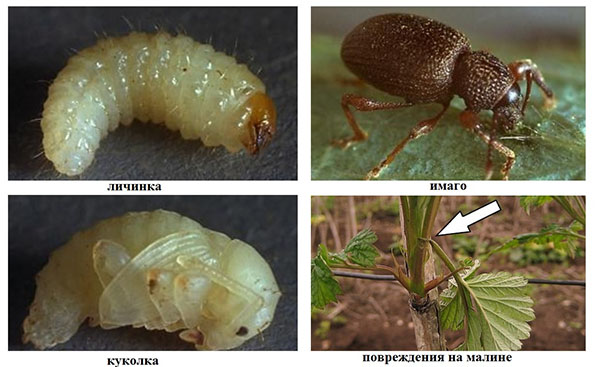
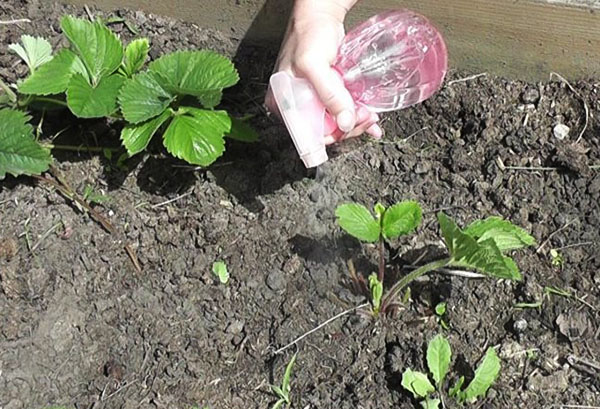

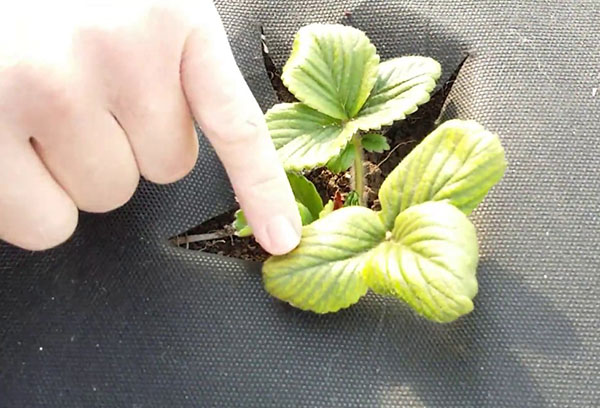
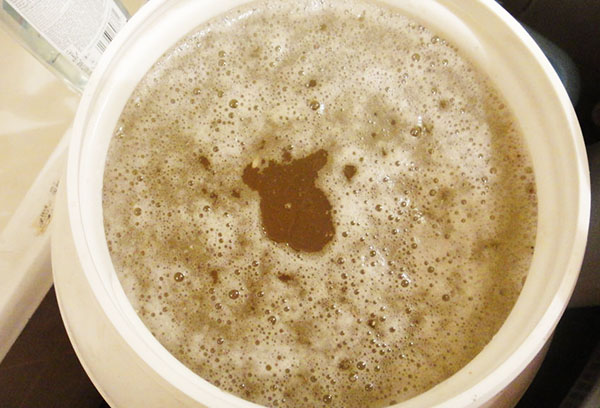
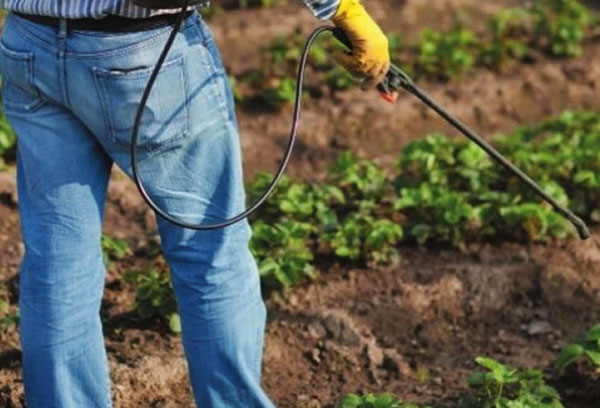

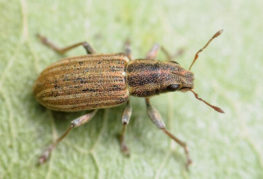
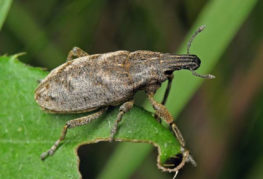
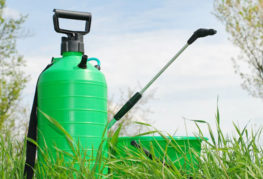
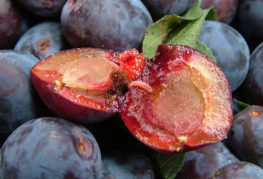
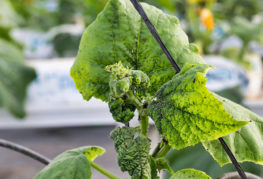
and will be published shortly.